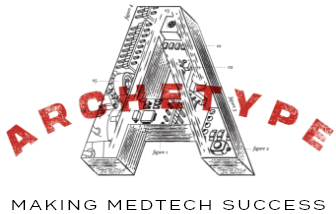Alternate FEI frameworks
FEI frameworks are not ‘one-size-fits-all’. This article looks at different FEI models most suited to the healthcare industry
Front End Innovation (FEI) - the initial phase of the innovation process – plays a crucial role in identifying opportunities and then refining and developing them into potential products or services.
According to Nobelius and Trygg (2002) there are six elements of the FEI process that contribute to identifying an opportunity: mission statement, concept generation, concept screening, concept definition, business analysis, and project planning.
They noted that the FEI process can vary significantly depending on the type of project, including the activities, sequences, degree of overlap, time required, and importance of individual tasks – meaning it is therefore essential to remain flexible in structuring FEI models.
In the healthcare industry few studies have identified current practices but evidence suggests that innovation teams in this sector face unique hurdles or barriers. Innovators need to evaluate increasingly complex regulatory and reimbursement environments and there are often multiple stakeholders, including the patients, the clinicians, and the funding body.
Technical uncertainty can often be more significant as well, due to the unpredictability of biological systems and extensive performance testing that typically needs to be conducted – and some models do not always predict product performance, biocompatibility, and safety in the human body, therefore compounding the technical risks. So which FEI frameworks are best suited to healthcare innovation?
Trotter (2011) investigated a multinational Global Healthcare Company and proposed the Total Front End Framework (TFEF) for Transformational Innovation. The study validated existing FEI theories and highlighted that even the most innovative companies can improve how they innovate. It proposed optimal team structures, processes and activities that which would ensure high-value opportunities and ideas are selected and progressed into NPD.
Taking another approach, Vagn Jensen, Clausen and Gish (2018) proposed three perspectives on managing FEI: a process model, a knowledge perspective, and a translational perspective.
While the process models used in managing FEI activities are often seen as problematic, several strategies have been developed to complement them – focusing on sourcing, sharing, and creating knowledge with those involved. They also view innovation not as a linear process but as an interactive knowledge process where knowledge exchange occurs, which offers an informal response to the limitations of process models.
The translation process involves conceptualisation and network recreation. It highlights that the content and intentions of FEI activities are more critical than the formalities and forms of collaboration.
Chang, Chen, and Wey (2007) conceptualised Front End Fuzziness (FEF), including varying levels of uncertainty, complexity, equivocality, and variability. FEF helps innovators assess the level of fuzziness in a project and measure the effectiveness of a framework in handling technology influx and outflow.
In an analysis of 266 front end published studies Park, Han and Childs (2021) found ten criteria divided into two dimensions. The first dimension consists of six criteria associated with the overall attributes of Fuzzy Front End (FFE), including the study taxonomy, model type, NPD speed, NPD attributes, model characteristics, and model structure. The second dimension is relevant to performance related to process parameters, comprising four criteria: the FFE task, activity, performance method, and toolkit. The paper formulated an FFE model development strategy for each criterion based on this identification.
Appio et al. (2013) looked at opportunity identification and analysis, emphasising the need for managers to consider various tools and their impact on performance metrics. They found no correlation between awareness of basic requirements for tool usage and dimensions such as effectiveness, difficulty of use, frequency of use, and estimated investment.
Contrary to current literature, Zhang, Cao and Doll (2019) argued that equivocality, rather than uncertainty, is the primary cause of front end issues, emphasising the importance of team vision as a front end deliverable, and prompting them to developed a framework to support it.
Frishammar and Lichtenthaler (2013) suggest the path from a new product idea to product definition presents numerous obstacles and managerial challenges that must be addressed to achieve successful front end activities. The article provides a framework and advice to guide managerial decision-making and provide support in dealing with incremental and radical innovations.
Kim and Wilemon (2002a); (Kim and Wilemon, 2002b) define the FEI as the period from when an opportunity is first considered to when it is deemed ready for development. They categorised the outcomes into three dimensions: product definition, time, and people, managed by strategies which include assigning an FEI manager or team, offering organisational support, comprehending the sources of ambiguity, building an information system, and developing relationships with supporters, partners, and alliances.
And finally two studies focused on ambiguity.
Brun, Steinar Saetre and Gjelsvik (2009) presented a model that classifies ambiguity along two dimensions: subject and source. The subjects of ambiguity include product, market, process, and organisational resources. At the same time, the sources of ambiguity include diversity, novelty, validity, and reliability.
Gama et al. (2022) suggested that appropriate capabilities are crucial to developing product definitions, proposing a capability-based contingency framework for harnessing front end ambiguity.
In conclusion, FEI frameworks must be adaptable to the unique challenges of the healthcare industry. By understanding and applying the right models, innovation teams can navigate regulatory complexities, manage technical uncertainties, and effectively bring new healthcare solutions to market.



